Melbourne International Film Festival 2018 Week 2 Report: Books, Crooks & Good Looks
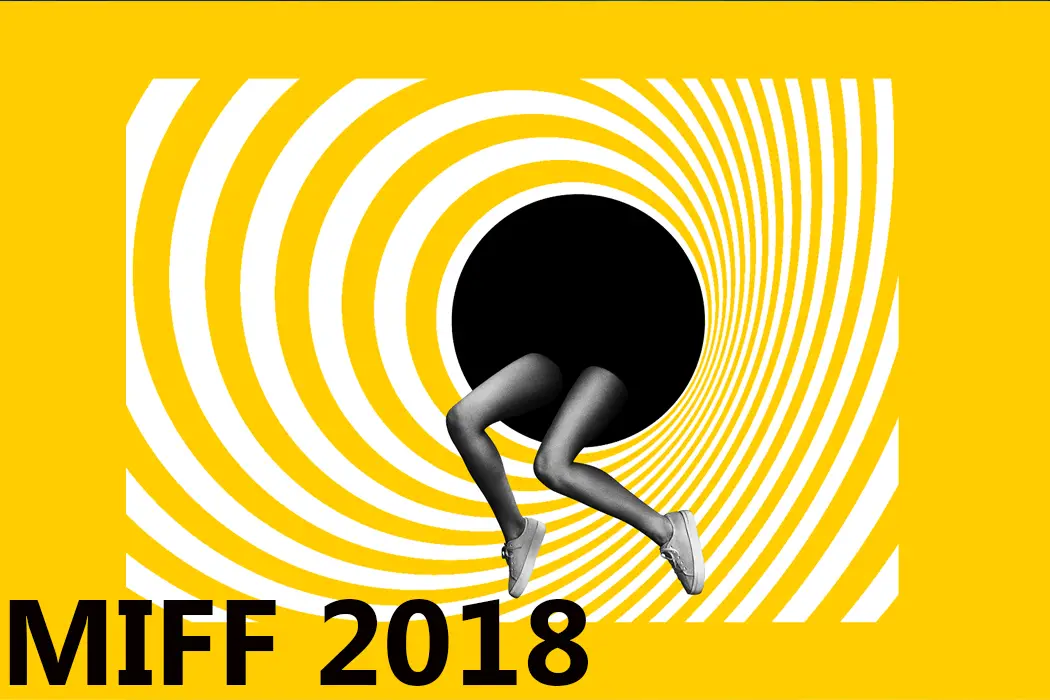
Alex is a 28 year-old West Australian who has a…
After watching 44 films, the Melbourne International Film Festival (MIFF) has come to a close for another year. Despite some hiccups (cancelled screenings and technical problems) it was still a genuinely fun and informative experience, three weeks spent catching up on the best new cinematic offerings from around the globe.
Before we get into the reviews for the last week, I wanted to list off my Top 5 films of the festival. As noted before, a lot of these films will never grace Australian cinemas again, either getting dumped onto home media or just never seeing the light of day down under again. Here they are:
- First Reformed (Paul Schrader)
- Bodied (Joseph Kahn)
- Mandy (Panos Cosmatos)
- Climax (Gaspar Noe)
- The Man Who Killed Don Quixote (Terry Gilliam)
Now time for my final reviews for the festival.
The Image Book (Jean-Luc Godard)
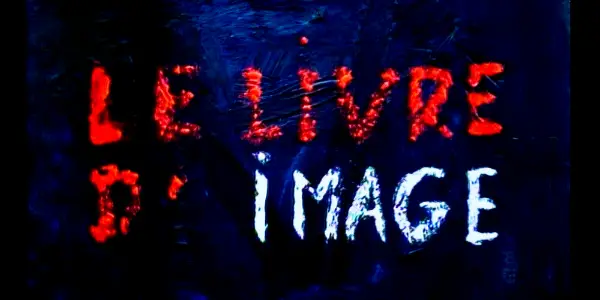
It’s amusing that a clip from Salò, or the 120 Days of Sodom is used in The Image Book, because it perfectly embodies how I feel about Jean-Luc Godard‘s latest effort; one of Salò’s most infamous sequences features a Duke offering his own feces to civilians to feast upon, and that’s exactly what the French-Swiss director has done here with this incomprehensible experiment.
Despite being one of the most influential directors of all time, Godard is someone who has grown an obvious disillusionment with film-making, forgoing conventional narratives in favour for self-indulgent contemplations on the different ways sound and image can be spliced together. Honestly, it’s like watching any new release starring Bruce Willis – if you have such an glaring disdain for cinema, why keep contributing to it?
Godard’s newest exercise is a cinematic scrapbook in its most literal definition, a visual compendium cobbled together from old film strips and discarded thoughts, specifically designed to be both confronting and disorientating, a feature-length nightmare that highlights the inherent issues of the auteur theory. Despite my disengagement with the material, I’m forced to stick this “film” on the same platform as Godard’s previous work, assuming that this scrambled mess, this damaged zygote of artistic impressionism, has multiple layered points that have seemingly flown over my head.
Anybody labelling this as ‘accessible’ ought to have a think of what that word means in relation to cinema; Crazy Rich Asians is accessible, The Image Book is merely a composite product made purely for future textbook analysis. This video essay posits itself as an examination of the Arabic world, featuring warnings of upcoming wars and turmoil, evident in the juxtapositioning of old war films against home-video footage of ISIS executions, but the only people who are able to decode the purposefully ugly aesthetics are those who are already aware of these issues, so this is not so much of a caution as it is Godard grumbling in his own echo chamber.
In what I can only assume is a brief moment of self-awareness, one of the old Hollywood clips used features the quote “It’s a book, I could make head and tails out of it if I put my mind to it” – this is the attitude that The Image Book should be approached with. The problem is, I simply do not care enough to try and decipher it and judging by the film itself, Godard does not care if I get it either.
Blaze (Ethan Hawke)
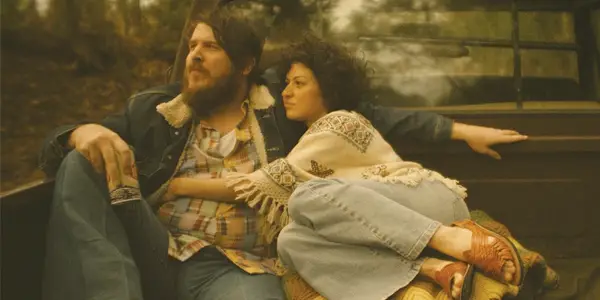
In the opening credits for Blaze, the first title card states it’s an “Under the Influence Film” – it’s hard to tell at first if this is the name of a production company, or a sly joke by director Ethan Hawke about the title subject’s boozy swagger. Blaze Foley, the country musician who was tragically murdered at the age of 39, may not be a household name, but he remains well-regarded within the music industry, with fellow singer Lucinda Williams summing up his persona as “a genius and a beautiful loser”, a conflicting duality that Hawke deftly balances within this lyrical portrait of the Texan legend.
“I don’t want to be a star, I want to be a legend” Blaze Foley (Ben Dickey, who delivers a terrific debut screen performance) tells his muse Sybil Rosen (an equally great Alia Shawkat), a quote which perfectly epitomises both the musician’s beatnik attitude and Hawke’s genuine reverence for the man. His screenplay, co-written by Rosen herself (based off her biography on the man), positions Blaze as a flawed but brilliant artist, who tends to talk in stanzas rather than sentences. In an attempt to eschew cliched biopic plot structures, Blaze is patched together from a collection of stories, telling his story in the same way that urban legends are often formed – through second-hand accounts and dubious tales, the types of anecdotes that are told on front porches whilst twiddling on an acoustic guitar.
Its multiple narrative frameworks are confusing at first, bouncing between a post-death radio interview between Blaze’s former musical partners, a detailed reconstruction of his final day and a linear progression of his failed mainstream career success. Jason Gourson’s match-cut editing helps ease these transitions, but it still feels at times overstuffed and at over 2 hours, it all eventually becomes too long. This isn’t so much a rags to riches story as it’s a rags to more rags morality tale, examining the flaws within the country singer that prevented him from becoming a headliner, a failure that this memoir hopes to re-correct – although it’s hard to watch any straight-faced biopic about a country singer without immediately thinking of Walk Hard.
There’s a reason why Blaze has such an assured direction, as this is not the first time Ethan Hawke (who’s having a stellar year, with three other films playing at Melbourne International Film Festival right now; Juliet, Naked, First Reformed and The King) has tackled this type of material, as his 2006 film The Hottest State, told a very similar saga about a musician and an aspiring actor within Texas (except that the genders were reversed). His style, inspired by John Cassavetes and past collaborator Richard Linklater (who shows us in a nice cameo), is relaxed, and allows his actors room to breathe.
Like most actor-turned-directors, Hawke is pretty clued in how to make his actors seem comfortable, thus obtaining the best performance he can out of each cast member (Kris Kristofferson shines in his single scene). When musical biographies like this come out, my test of their value is this; would you gain anything more or less by ignoring the film and just simply listening to the artist/band’s greatest hits CD? Blaze partially passes, because his music already made him the legend he hoped to be – Hawke’s film just adds more fuel to his enduring flame.
Museum (Alonso Ruizpalacios)
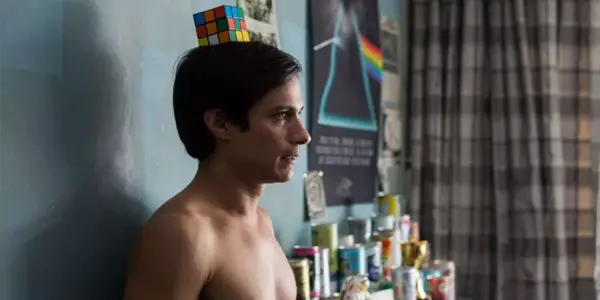
Recently, news of a Seoul-based company discovering the underwater wreck of a sunken Russian warship, one estimated to be carrying $190B worth of gold on board, hit the internet and immediately sparked an ethical debate; who does the gold belong to, the Seoul finders or its original Russian owners? It’s this question of cultural appropriation and finders-keepers mentality that fuels Alonso Ruizpalacios’s stylish heist film Museum.
Based on a true story (or as the film states, a replica of the original), Ruizpalacios’s sophomore feature forms a fictional narrative about the very real theft of 140 Mayan and Mesoamerican antiques from the National Museum of Anthropology, a caper which took place on Christmas Eve, 1985. What was actually a large group operation performed on behalf of drug traffickers is condensed down to the misdeeds of just two men, Juan (Gael García Bernal, who is in prime asshole form) and his best friend Wilson (Leonardo Ortizgris), who as the film’s narrator, reminds us of the first rule of translating real history to screen: “Why ruin a good story with the truth?”.
When we first meet these budding losers, Juan is trying to force Wilson to shoot a Rubix Cube off his head – the children’s toy is not the only thing on his mind, as the aspiring veterinarian is on the cusp of forcing his best friend to perform another risky act. Despite being the black sheep of his family, Juan seems to have a strong grasp on history, able to relate any situation back to some historical anecdote, which may be one of the reasons behind the planning of the museum heist (the relics remind him of “Mexico before it was Mexico”).
One of the smartest decisions that Ruizpalacios’s screenplay makes is never giving a definitive reason behind Juan’s robbery; is it money? is it an attempt to reclaim Mexican history? Is he trying to gain respect from his doctor father? Or is he just bored? All we know is that he’s been planning it for a while – the glimpse at his thoroughly detailed notebook describing every step of the plan says more than any line of expositional dialogue ever could.
MIFF 2018 favourite American Animals dealt with similar thematic territory, but it merely just asked these questions – Museum succeeds because it actually digs into them, imbuing Juan with a sense of moral complexity that grounds the escalating drama, preventing the material from becoming just another clichéd heist picture. The actual heist itself, a mostly silent break-in arranged to the operatic tune ‘The Night of the Mayas’, is remarkable, a true tribute to the French work of Jean-Pierre Melville and Jules Dassin, who both perfected the ‘silent robbery sequence’ back in the 1950’s and 70’s.
Damián García’s camerawork is unafraid to hold on a shot, whether it be on the intricacies of how the pair break into the museum’s glass cabinets or their tense meeting with a potential fence, a slimy Englishman (Simon Russell Beale) who represents the hypocrisy of the museum industry, as he firmly informs the pair that “There’s no preservation without plunder”. This sleek cinematography is just one part of Museum’s overall smooth and snazzy charm, that despite consistently flirting with cliche, always finds a new and original way to tackle each of its formulaic plot beats. This is the only film at Melbourne International Film Festival where you’ll see a basic bar fight hilariously transform into a full-blown old school martial arts parody – just for that alone it gets my thumbs up.
Capharnaüm (Nadine Labaki)
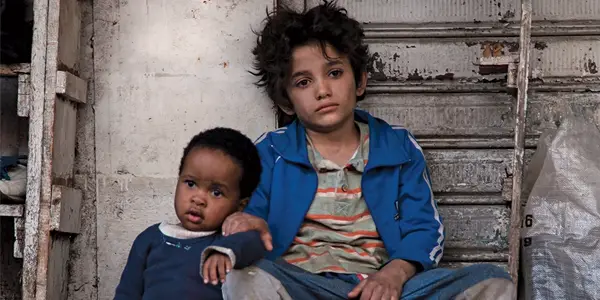
It’s Lord of the Flies in the streets of Lebanon in Nadine Labaki’s Capharnaüm, a film that arrives at Melbourne International Film Festival after winning both a Jury prize and a 15 minute standing ovation at Cannes this year, a severe overreaction to this contrived drama. It’s simply shallow, harrowing poverty porn that contains enough political and aesthetic landmarks for privileged audiences to be obliged to deem it important – the imagery of children within jail cells alone is bound to incite instant Trump comparisons, the bare minimum required by arthouse crowds today to look past the film’s blatant manipulative manner.
It’s important to put the spotlight on distressing foreign stories like the one Capharnaüm presents, but it also has a pungent reek of art that’s been made to generate a subtle reassurance within Western audiences, using the transportive nature of cinema to make people appreciate their own living conditions. It’s easy to place a camera on a sad child and immediately generate sympathy – this isn’t a film as much as it’s a two hour infomercial for your local church’s outreach program.
We begin in media-res, as Zain (Zain Al Rafeea, continuing the current arthouse trend of using non-actors, which seems to be the new shortcut into immediate authenticity) has been charged with “stabbing a son of a bitch”, an arrest that has warranted him a hefty 5 year jail sentence. He’s not in court for this though. No he’s actually decided to make the headline-grabbing notion to sue his parents for giving him life – the biggest child-led lawsuit since Elijah Wood divorced his parents in North.
It’s an intriguing premise that’s quickly dropped in favour of covering the desolate upbringing that lead the minor to end up in prison, starting from the cramped quarters his abusive parents kept him in (as one of his many younger siblings sits chained to the floor). It’s a tragic home-life that makes living on the streets more of a viable option, despite their similarly poverty-stricken conditions, at least the kids in The Florida Project got to have some fun amongst the despair.
As we look back at these shocking events, Labaki intersects beloved American childhood icons within the depravity of these destitute settings, whether it’s Zain narrating Winnie the Pooh in a filthy manner, a chain-smoking amusement park owner who wears a trashy Spiderman-ripoff outfit (named Cockroach Man) or the broken Despicable Me toy that sadly wallows within the decrepit shack of Rahil (Yordanos Shiferaw), the Ethiopian single mother who briefly houses the displaced Zain.
The serviceable handheld cinematography tries to heighten the realism of the situation, but the writing is so forced that we’re constantly reminded that this is just reconstructed fiction, a prime example being when Zain warns his parents that Sahar’s new husband Assad (Cedra Izam) is bad news – we can already guess how that subplot ends, because remember, if this film can make a narrative decision that makes the current situation more miserable than it already is, you better believe that Labaki will double down. Halfway through the baggy 135 minute runtime I honestly expected a legless labrador (or just any senseless scene of animal cruelty) to come out in order to force those remaining dry-eyed audience members to bring up the tears that this film so desperately begs for.
To top it all off, her screenplay, co-written with Jihad Hojaily and Michelle Keserwany, has the audacity to tack on a modestly happy ending, which not only feels fake within the reality of the world we’ve been thrown in, but only feels inserted just to give Western audiences the catharsis that they crave from traditional entertainment. It’s as if Labaki had no faith that viewers would have empathy for the suffering of others when watching (to be fair, judging by the state of things at the moment, I don’t blame her), because she overlays every melodramatic plot beat with a sorrowful mix of strings.
When the sad music kicks in as Rahil begs to God, squeezing fistfuls of breast milk into a jail cell’s toilet bowl, it starts to feel like we’ve entered satirical territory. The world is in a bad place, and there’s hundreds of children everyday that unfortunately live in the dismal circumstances that we see in Capharnaüm, but what does this film actually say about the situation? Nothing much apart from “it sucks” – a sentiment that could also be said about this tedious social drama.
The Wild Pear Tree (Nuri Bilge Ceylan)
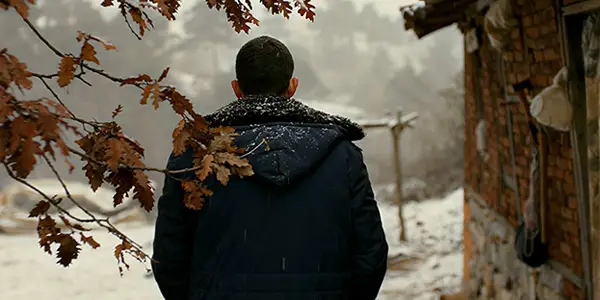
After the universally acclaimed Winter Sleep, Nuri Bilge Ceylan returns to investigate another facet of Turkish society in The Wild Pear Tree, another epic endowed with a strong sense of time, place and millieu. Despite a three hour runtime that revolves around a series of intellectual and philosophical discussions, this is easily Ceylan’s most dynamic and spirited work yet, as his previous films have tended to hold themselves at a slight, but noticeable intellectual distance from the audience, observing characters in unbroken wide shots that feel more like animated paintings than motion pictures.
This new film still shares the same cool and contemplative atmosphere of his old work, but what makes this new entry different are his technical decisions – the editing is more quick and conventional, the cinematography oscillates between warm and cold colours and there’s even a (mild) chase scene!
Sinan (Aydin Doğu Demirkol), a university graduate and aspiring writer, has returned to his native village in rural Turkey as he needs to complete one final exam to become a teacher, the same profession as his father Idris (Murat Cemcir). He’s resistant to fall down this career path, as he’s just finished his first feature-length book, hoping that its success can immediately launch him into literary stardom which’ll whisk him away from the locals that he arrogantly considers below him.
His attempts to scrape together the money needed to publish his debut novel is hindered by the crippling gambling addiction of his father, with the conflicting relationship between the two men being neatly woven through the fabric of the film, a well-examined running antagonism that both hinders and helps each of their selfish compulsions.
Sinan is young and defiant, surrounded by people who once were, spending his lost days verbally sparring with the various village townsfolk that he casually bumps into, whether it be his old high school flame (easily his most visually gorgeous encounter), a pair of imams (in the film’s most superfluous and overlong detour) or a local successful author, who when asked about inspiration for the subject matter in his work, tells the inquisitive kid “Nothing is totally ordinary, there is subject matter everywhere”, a remark which seems to perfectly sum up Ceylan’s entire body of work. Gökhan Tiryaki’s cinematography is suitably operatic, especially when employing his trademark wide shots that perfectly embody the director’s unique vision – nobody captures the diminutive nature of human beings against huge scenic backdrops quite like him (because of this, the short moments of GoPro footage are distracting).
His stark aesthetics may evoke Tarkovsky’s legacy, but his characters talk with a Bergmanesque sense of clarity, as each of Sinan’s different conversations touch upon topics of religion, hereditary mentalities, the importance of literature and general philosophy, all discussed in a clear and adult manner. This is the closest we’ll get to Ceylan’s My Dinner With Andre, but if Wallace Shawn and Andre Gregory were father and son (a film I would pay to see).
Managing to balance dispassionate observation with a sympathetic interest in individual motivations, The Wild Pear Tree once again demonstrates Nuri Bilge Ceylan as a filmmaker patient with a world that demands superlatives, a refreshing diversion from the intensity of modern Hollywood entertainment.
That’s it for our Melbourne International Film Festival capsule reviews this year. Did you attend the festival? What were the best films you saw?
Does content like this matter to you?
Become a Member and support film journalism. Unlock access to all of Film Inquiry`s great articles. Join a community of like-minded readers who are passionate about cinema - get access to our private members Network, give back to independent filmmakers, and more.













